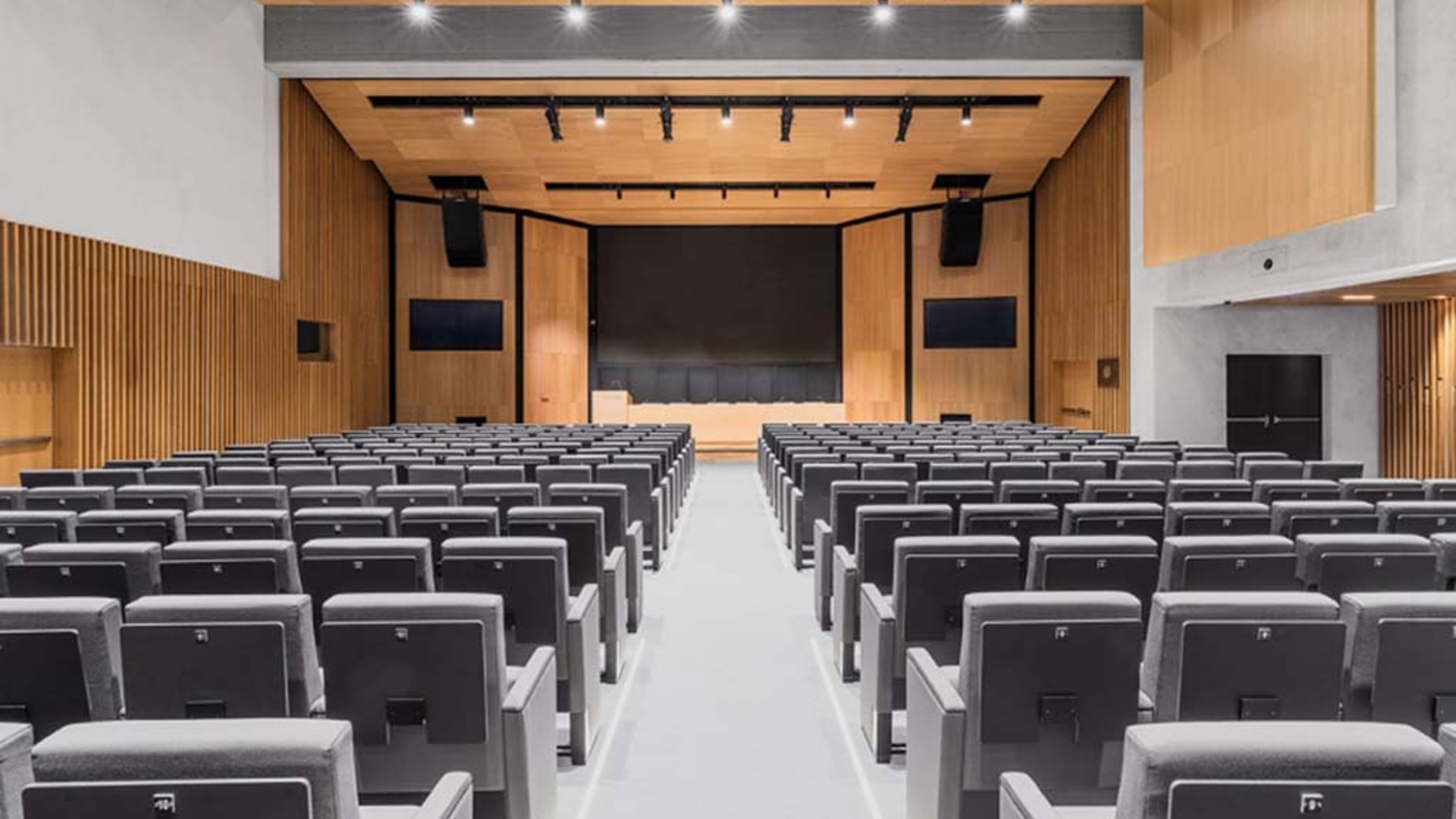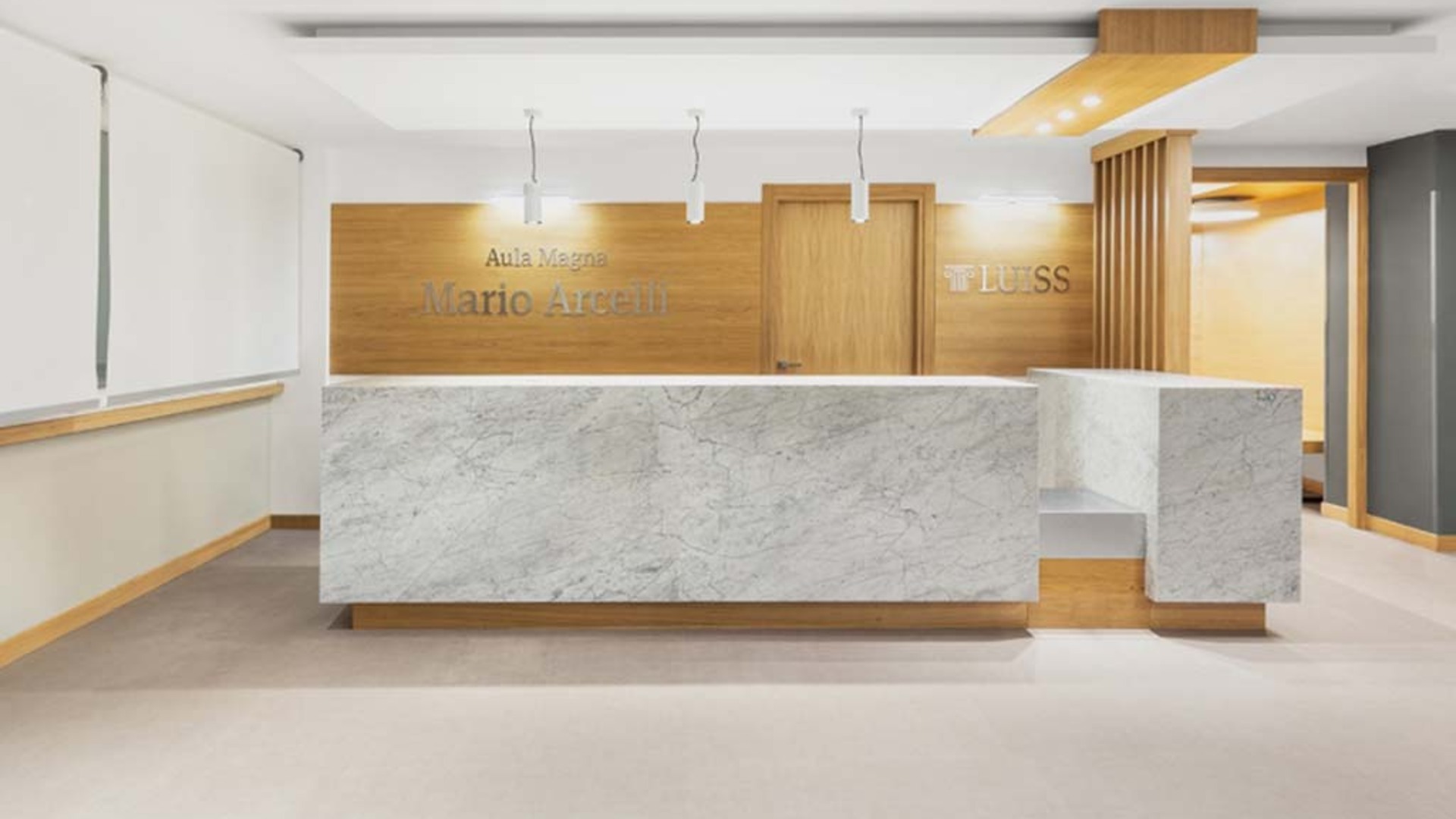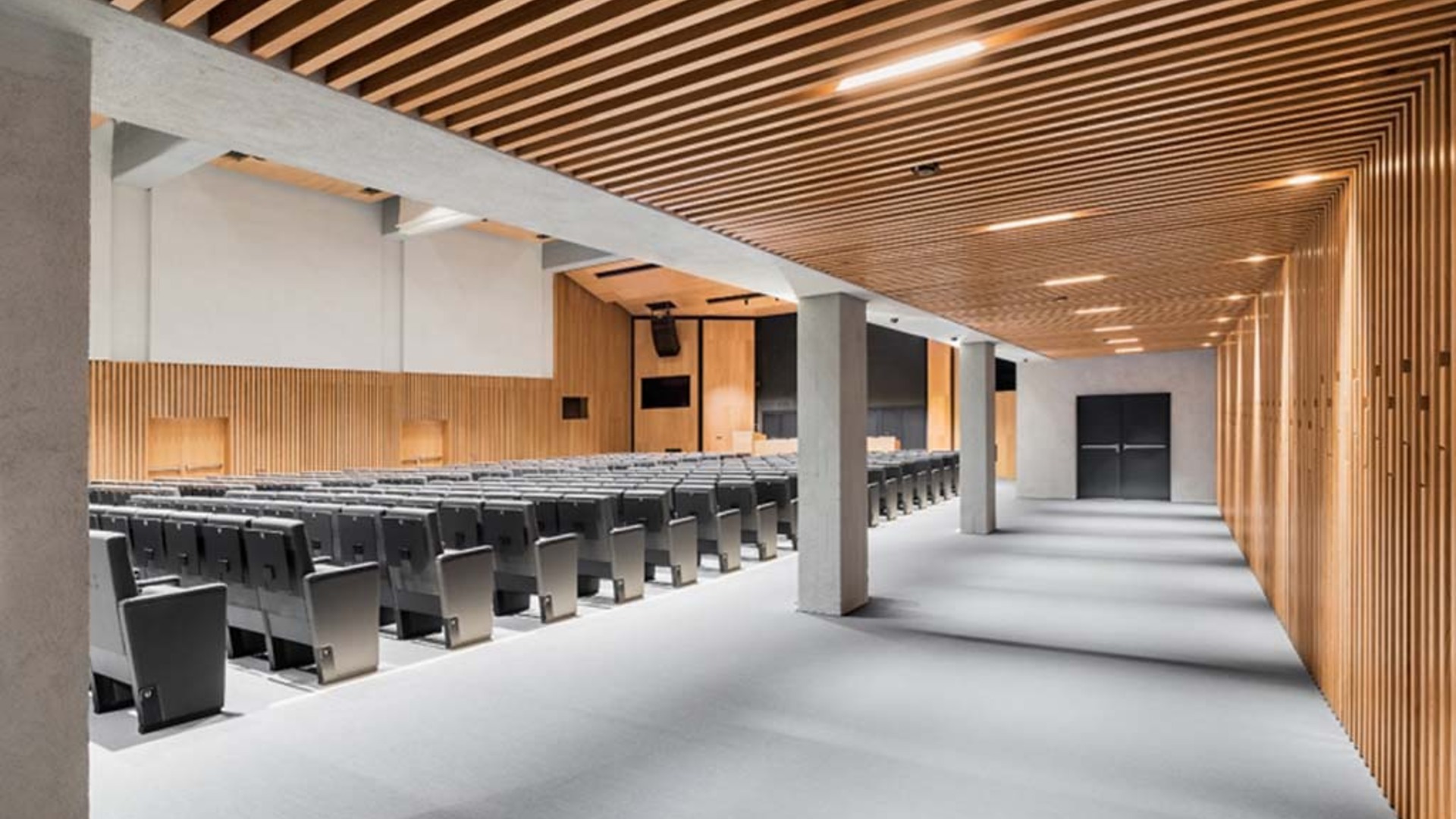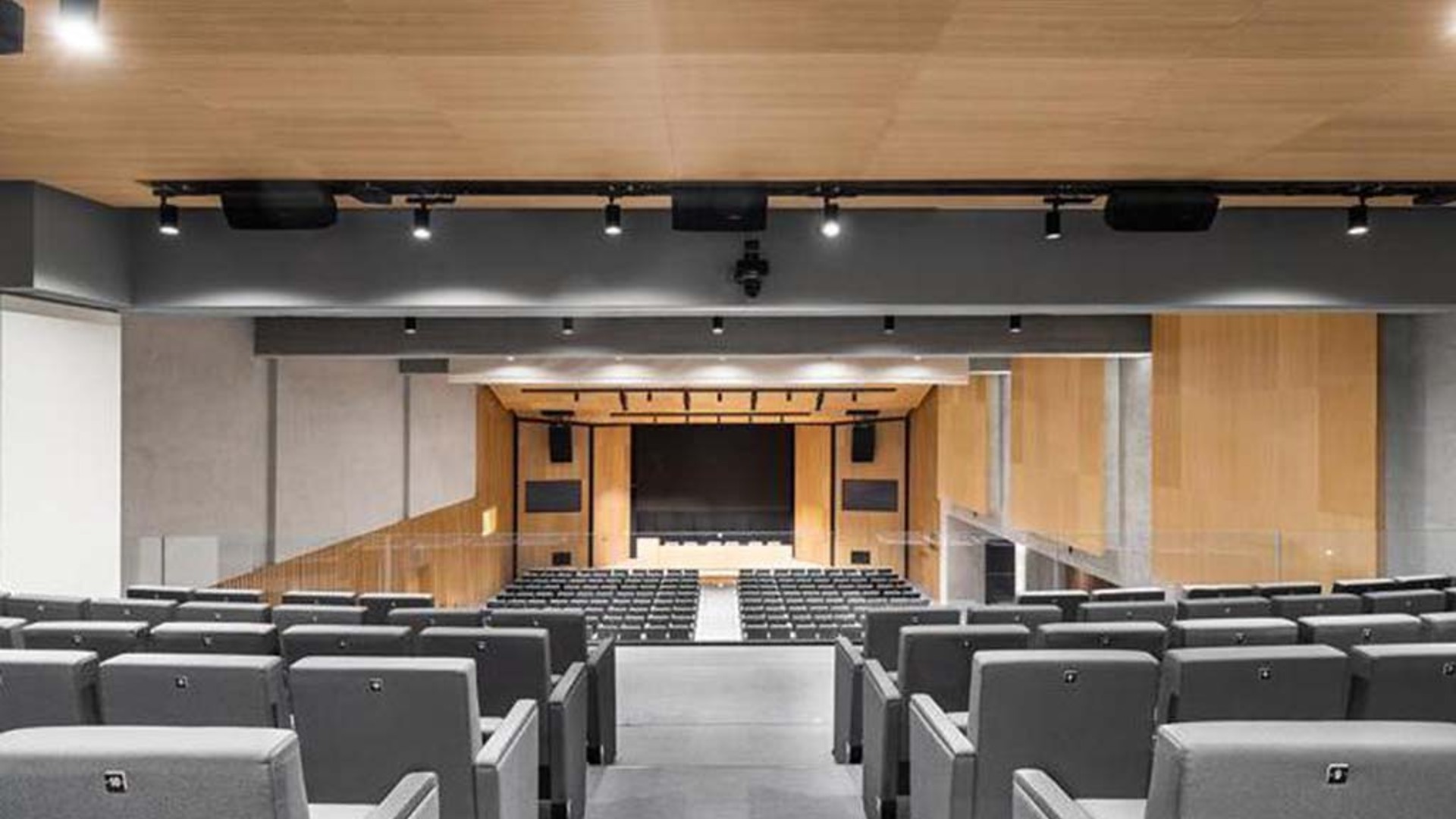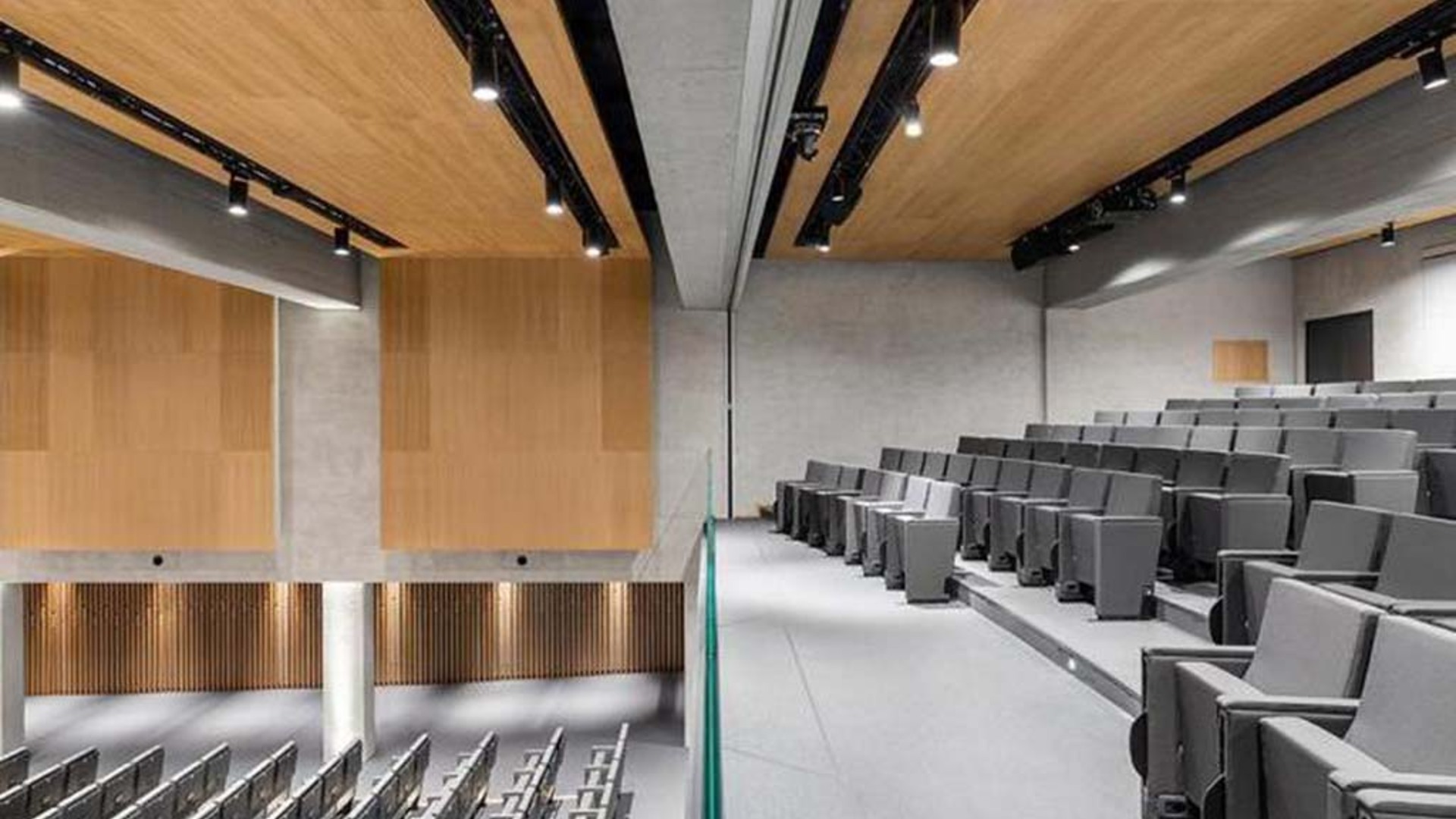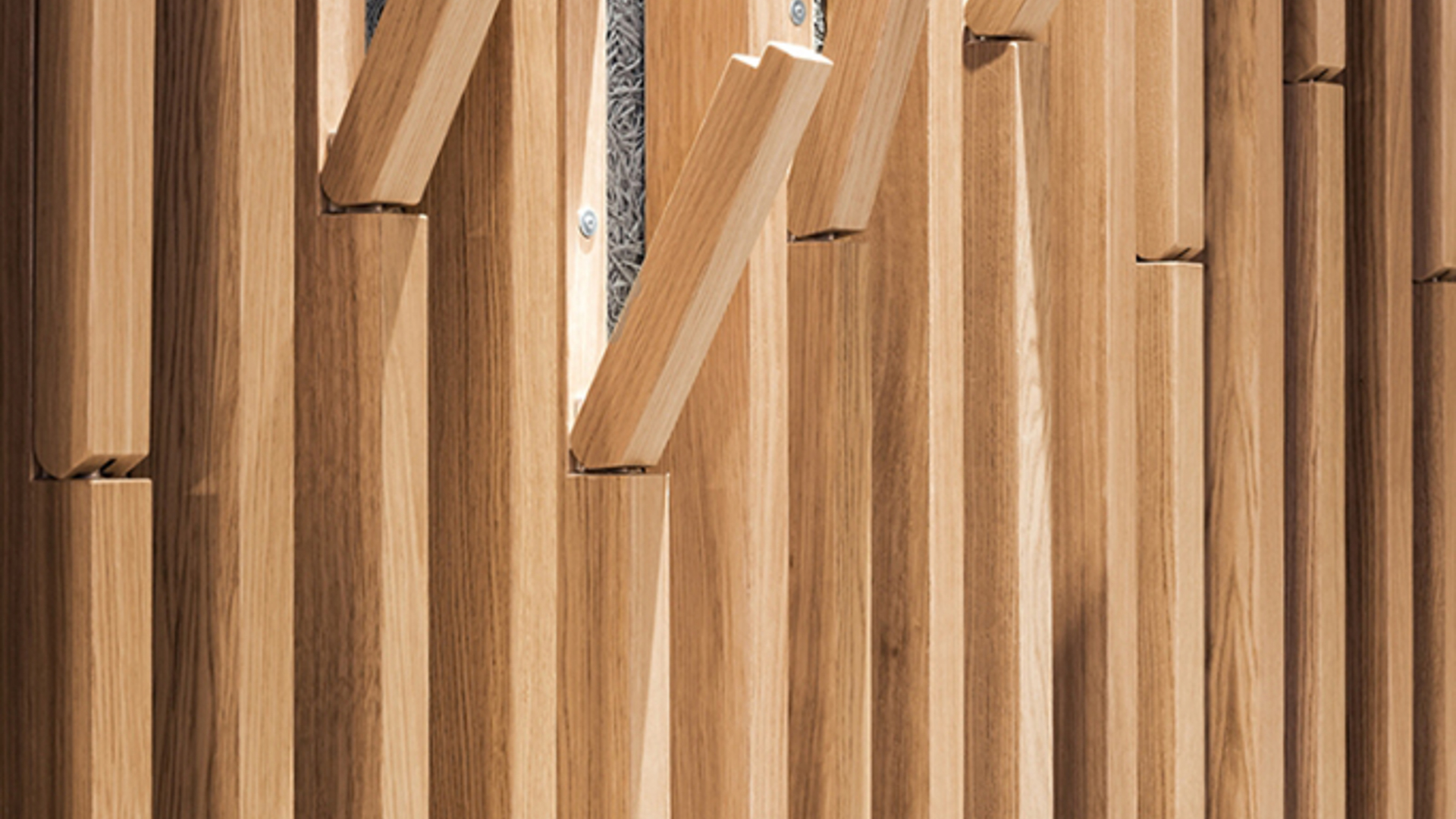Architectures
LUISS AULA MAGNA
City: ROME
|Year: 2018
|Status: Completed
A new model of auditorium, dynamic and multifunctional; the cold tones of the fair-faced concrete and the warmth of natural oak wood in a balanced game of textures and colour contrasts.
The Aula Magna within the historic headquarters of the LUISS Guido Carli university campus, in the heart of Trieste district in Rome, covers a total area of almost 700 square meters, with capacity for 500 seats.
The parterre consists of four seating areas, plus two sectors on either side of the director’s cabin, which can be partially removed. The gray-fabric armchairs reflect the colour of the carpet, bringing homogeneity to the whole. Equipped with folding tables, electricity and USB sockets, it simultaneously doubles up as a classroom. The finish of the Aula Magna is divided into two. The lower part of the room incorporates gray painted Celenit panels and features natural oak listels. The false ceiling and the entrance aisle are covered in the same way with integrated lighting between the listels. In this space, listels can be partially warped and used as coat hangers.
Next to the podium, the listel cladding continues at full height, hiding behind the suspended false ceiling made of oak wood. On this wall, listels conceal the access door to the simultaneous translation booth, since they continue in correspondence with the door itself. The stage, raised only 30 cm, features oak slat flooring and oak panelled wall cladding, which frame the black background wall in continuity with the large LED wall screen. The black panels, which can be hinged open, camouflage the access to the backstage technical rooms.
The framework of the hall is asymmetrical because the opening towards the entrance aisle is opposed on the other side by a continuous wall in listels interspersed with safety exits. Asymmetry continues in relation with the superior order of the walls of the hall. On one side, the suspended false ceiling in microperforated wood with sound absorption properties, in correspondence with each structural span, continues with the same finish on the walls. It forms protruding wooden plafond that oat above the separation portal between the hall and the side entrance aisle. On the other side, the upper part of the wall, in plasterboard with scratched plaster, is designed as a backdrop for projections, thanks to three projectors embedded in the opposite wall.
The gallery, equipped with roll-up screens for projections and with all equipment that favours didactic use, encompasses scratched plaster walls and an oak-panelled false ceiling, creating coherence with the rest of the room. The mobile wall, which separates the gallery from the main room, consists of packable panels with high acoustic insulation characteristics. The design has been curated to 360°, starting with the furnishings such as the conference table and the podium, tailor-made with meticulous attention to detail, functionality and integration to all technological devices. Even the use of colour and the choice of materials have been precisely calibrated: the cold tones of the béton brut and the coarse-grained plaster merge with the warmth of natural oak wood, in a balanced game of textures and of colour contrasts.
Photo credits: Delfino Sisto Legnani, Marco Cappelletti

